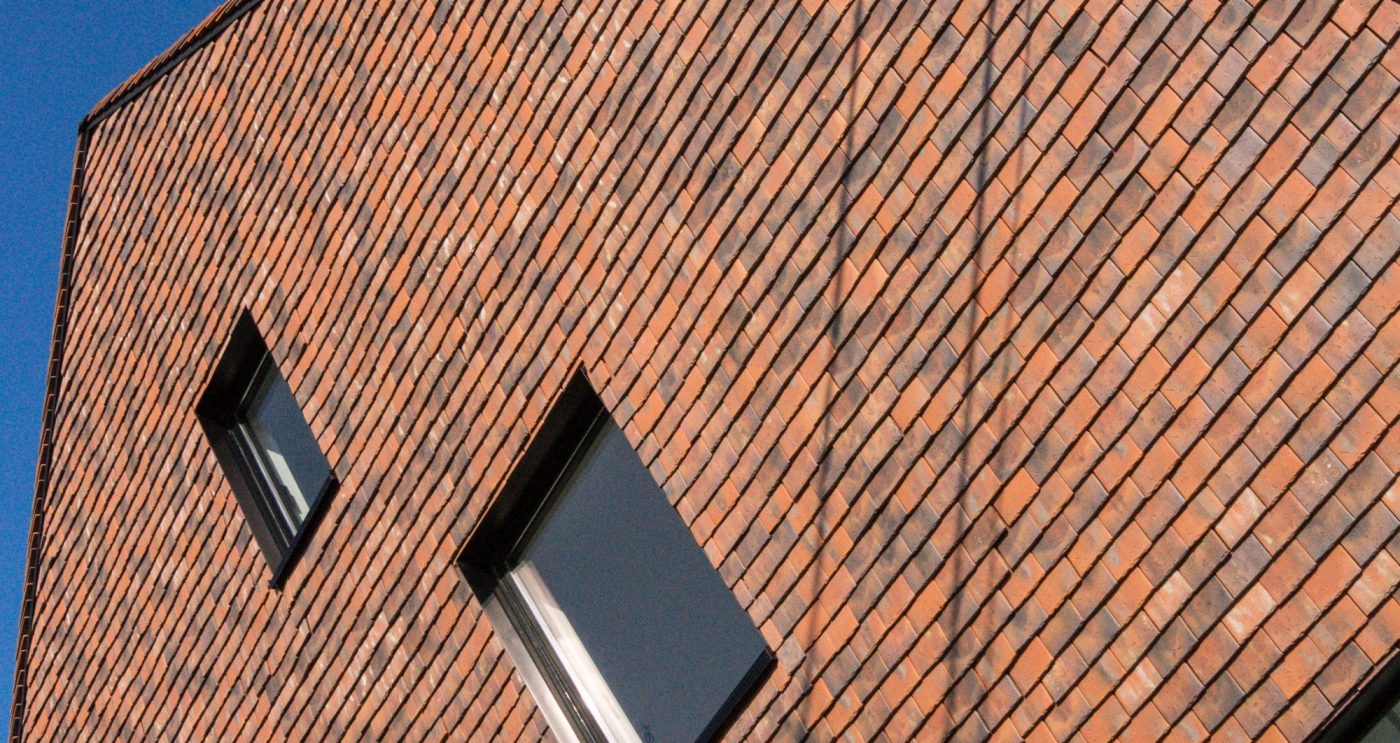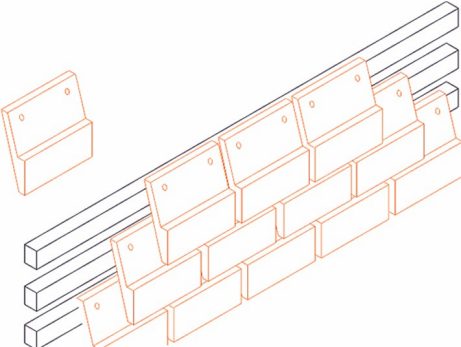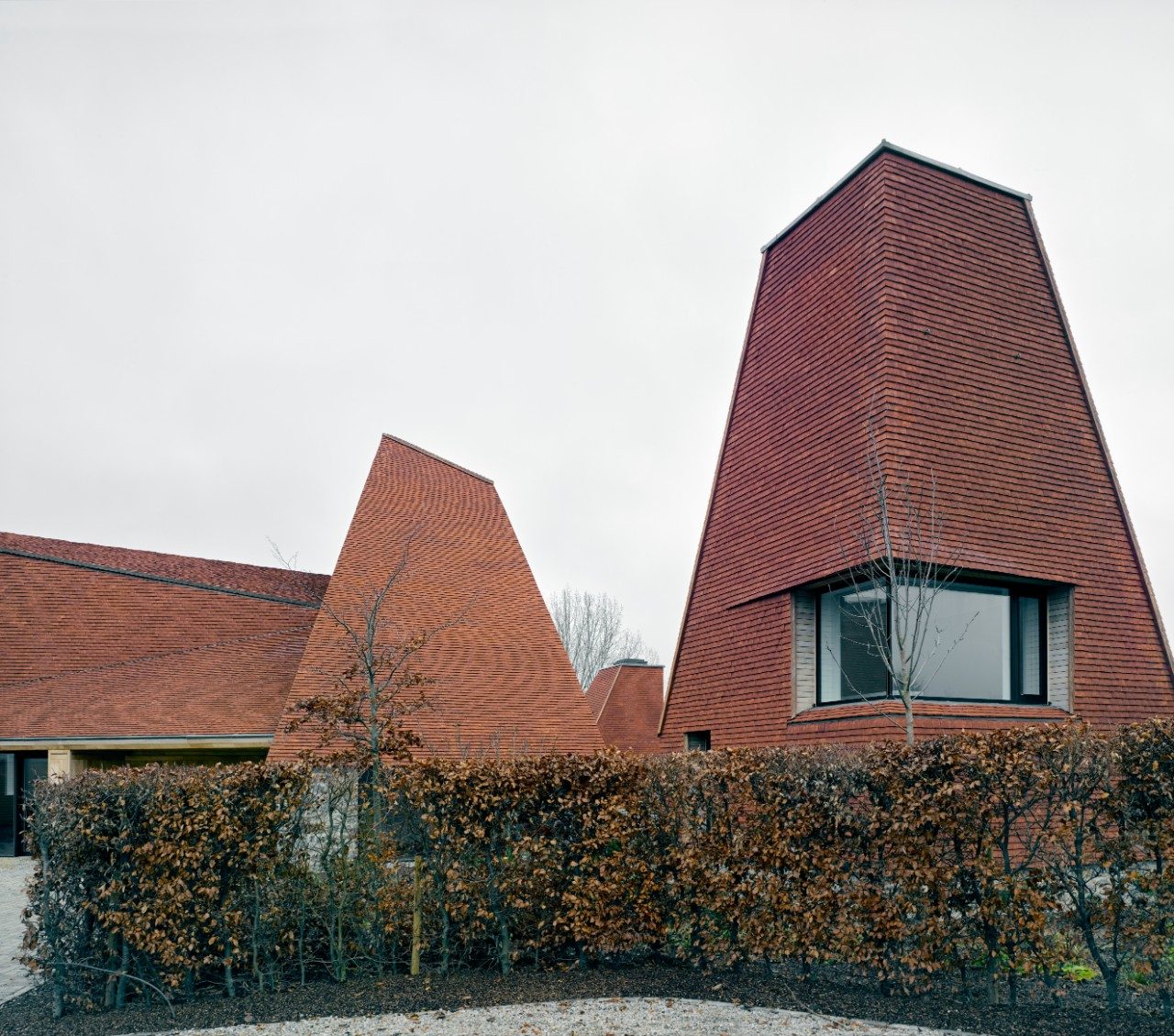Vertical tiling, also referred to as 'tile hanging', is the practice of installing roof tiles to vertical walls as a cladding solution.



Vertical tiling, also referred to as 'tile hanging', is the practice of installing roof tiles to vertical walls as a cladding solution.
The practice began in Kent, Surrey and Sussex around the end of the 17th Century. Builders were looking to improve on the inadequate weather protection offered by wattle and daub on first floor walls, particularly in more exposed sites. Bricks would have been the obvious solution, however the timber framed houses of the time could not take the weight imposed by brick cladding on the upper story, so clay plain tiles became the preference.
Clay tile production was on the increase in the UK, which meant that costs had reduced whilst availability had improved. Around the same time the introduction of the brick tax in 1784 (during the reign of King George III) further fuelled the demand for clay tiles as a cladding material, otherwise known as “mathematical tiling”. As well as the cost advantage, mathematical tiles, being lighter, were ideal for timber-framed buildings and required less skill to lay them than traditional brickwork. They are fixed to timber battens, with the lower, exposed portion of each tile resembling brickwork laid in a header or stretcher bond pattern (see diagram).

The brick tax was abolished in 1850, but by that time the practice of vertical tile hanging had spread across the South East and beyond. Today, vertical tiling can be found across the country where it is regularly used as a means of adding character to buildings, as well as a cost-effective method of cladding. It can also be used to give the roof greater dominance over the walls and offers a variety of detailing possibilities, such as Winchester cutting. Vertical tiling can cover the whole of the exterior walls from the first storey up to the eaves or may be only used on dormer window cheeks or between bay windows.
Vertical tilling was originally done using clay plain tiles but since the 1960’s it has also been carried out in concrete plain tiles. Despite the presence of the concrete alternative, vertical tiling is still more commonly performed in clay rather than concrete. This may be down to the fact that vertical tiling means the tiles are closer to the ground and more visible than tiles used on a pitched roof. This would make the richer and more rustic nature of a clay tile a more appreciable benefit. The colour-fast properties of clay would also be more apparent, particularly when used alongside clay bricks that similarly do not lose their colour.
BS 5534: the British Standard Code of practice for pitched roofs and vertical cladding defines a wall as any surface at a pitch of 75 degrees or greater from the horizontal. It also states that for walling, the headlap for double lapped tiles should be no less than 35mm, meaning that standard size plain tiles, at 265mm long, should be laid at a maximum gauge of 115mm when tiling vertically. The side laps should be no less than one third the width of the tiles, typically 55mm, although this can be reduced to 38mm with Winchester cuts where there is an overhanging verge. All tiles should be twice fixed, normally using either alloy or stainless-steel nails or stainless-steel screws, with a wind load calculation carried out to determine if the proposed fixings are adequate.
A key consideration when installing vertical plain tiles is how to secure them to the wall. In theory, the tile battens can be fixed directly to the wall, though this can be impractical due to the number of fixings required and the actual condition of the masonry. Normally, it is better to firstly secure counter-battens to the wall. These can be secured using fixings appropriate to the type of wall; for example, old brick, new brick, blocks etc. In the case of new masonry, ask the brick or block manufacturer for their recommendations on the use of fixings into their products, or consult a fixings supplier. Then, the tile battens can be nailed in the usual way to the counter-battens. The underlay layer is positioned between the battens or counter-battens and the wall.
Standard plain tiles are normally used for vertical tiling and special fittings are available to complement them, such as external and internal corner tiles. These are handed to maintain the broken bond pattern and are available to suit 90 degree and 135 degree corners. A point to note is that corner tiles are designed to match the actual pitch of the tiles, not the pitch of the wall, therefore it is important that the eaves ‘kick’ is set correctly to ensure the corner tiles fit properly.
Feature tiles are also popular for vertical tiling, with various shapes available, such as Fishtail, Club, Bullnose and Arrowhead (also known as ‘Pointed’). Feature tiles are sometimes used on pitched roofs also but remember that the nature of the tile shape means that the headlaps and sidelaps are reduced, so the roof must be sufficiently steep and sheltered to prevent water ingress.
Where there is a storey above a window head, the ‘eaves’ of the vertical tiling above the window must not allow fire to spread into the batten cavity, therefore the vertical tiling soffit must resist fire spread.
For more information about vertical tiling, take a look at the Roof Tile Association’s Vertical Tiling Guide.
Find guidance and information on how to securely and safely install cladding to your projects.

Discover our range of facade solutions, order a sample or contact our team today to find out more.